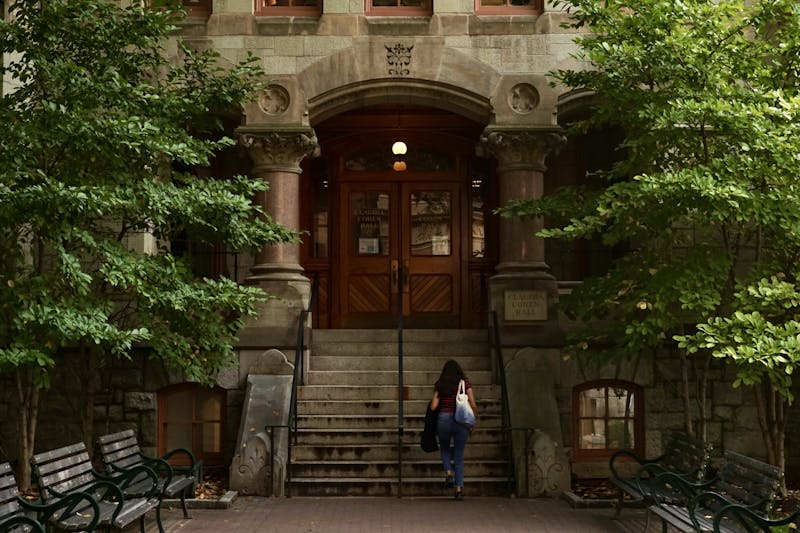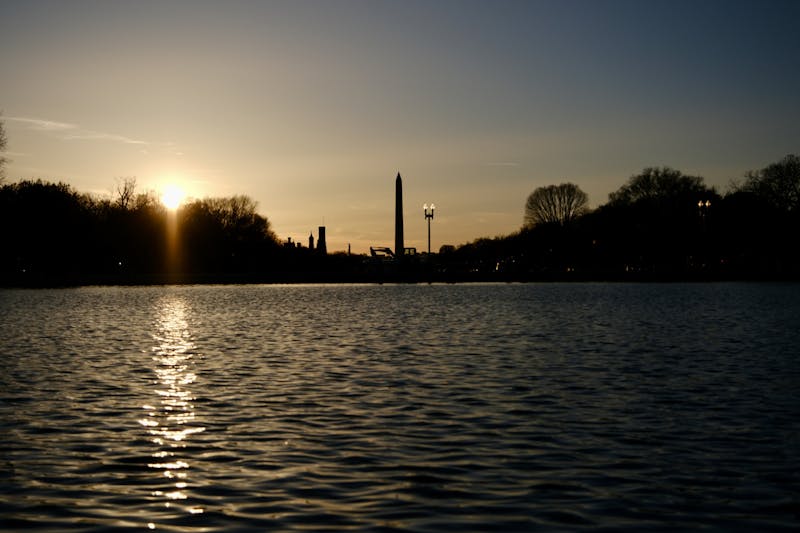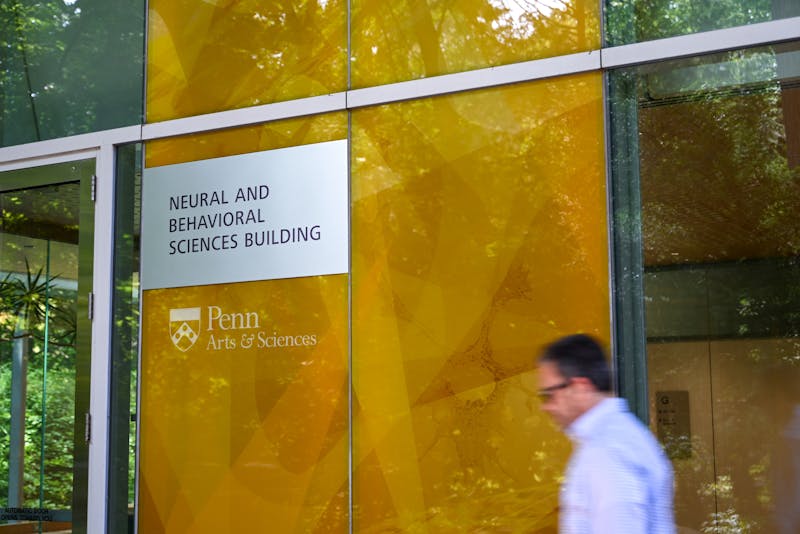John Randolph remembers the east bank of the Schuylkill River during the 1980s as an industrial wasteland teeming with drug dealing and prostitution.
The land languished until the early 1990s, when Randolph and some local residents adopted a plan -- first conceived in the late 1960s -- to reincarnate the seedy area as the Schuylkill River Park. But it took a long and determined grass-roots campaign to generate widespread support for the project.
Only in the last couple of years have those dreams finally come to fruition.
The promenade now runs continuously from the Fairmount Water Works south to South Street. New landscaping is in the works. Nearby bridges will soon undergo major renovations, and according to the nonprofit Schuylkill River Development Corporation, nearly $2.4 billion of private investment will be flowing into the surrounding area.
As a result, many are beginning to see the revitalization project finally making the Schuylkill riverfront a true urban destination and, in the process, uniting Center City and University City.
Industrial burnout
Since the early 1800s, when the first development along its banks began, the Schuylkill River has been an industrial corridor. During the 19th century, coal and iron mines, oil refineries, shipping and transportation depots, breweries, mills, factories and even a central slaughterhouse all sprung up along the riverfront.
In the 20th century, the area's fortunes dramatically reversed. From the Great Depression through the 1960s, the area experienced a steady decline that saw most of its central industries falling on hard times.
By the 1970s, the industrial base bottomed out and vacant factories and abandoned warehouses crowded the riverbanks.
"The Schuylkill Expressway, like I-95 to a certain extent, went ... in places where industries were dying and it was pretty convenient to run highways," Urban Studies lecturer Domenic Vitiello said.
In the 1980s, according to SRDC Chief Executive Officer Joe Syrnick, the area was underused, overgrown and plagued by illegal activity.
In the last two decades, limited development has taken place, but only since the recent stock market boom has the area finally turned the corner.
A widespread reconceptualization of urban riverfronts aided the turnaround. Rivers began to be seen as unique public spaces that could unite cities by providing recreational urban amenities.
"It was only in the past 40 years that there has been a shift and a swing internationally to reclaim waterfronts," Penn Praxis Executive Director Harris Steinberg said.
Philadelphia has been relatively late in embracing this vision, but city leaders have not completely missed the boat.
"The one time you get a chance to do anything is when land use changes [and] it comes under the regulatory process," Urban Studies lecturer Michael Nairn said. "There's a chance to do these things, which have been only pipe dreams in the '70s and '80s."
Reclamation
The change along the waterfront became visible last May with the completion of the Schuylkill River Park that now runs from Fairmount Park to South Street along the east side of the river. By the end of the year, the bare pedestrian and bicycle path that currently constitutes the park will be fully landscaped.
The SRDC is currently in the process of negotiating the acquisition of 16 plots of land along the riverbank that would stretch the park south of Penn's campus toward Gray's Ferry Avenue.
Planners hope to have the park cross at the Gray's Ferry bridge and continue on the West side all the way down to Bartram's Garden -- the oldest botanical garden in the country. According to Syrnick, the park can be finished by 2009.
The park itself is only one part of the reclamation effort.
One of the other goals is to increase connections across the river by remodeling the bridges and making them more pedestrian and bicycle-friendly. With the recent availability of public funds and long-sought support of the Pennsylvania Department of Transportation, those hopes may well become a reality.
The dilapidated South Street Bridge will be rebuilt by the city by 2008, and the new construction will incorporate a ramp, providing access to the park below.
Many of the Schuylkill bridges -- most notably the bridge at JFK Boulevard, which will soon be rebuilt -- were designed solely as automobile causeways.
The SRDC is working to ensure that the new bridge will feature sidewalks and bike lanes, as well as to increase the lighting and expose better views of the river.
The Market, Chestnut and Walnut street bridges may undergo facelifts in the future as well.
But the plan is also aiming to make the river itself an attractive destination. Besides working on river cleanup, the SRDC is using a $2 million grant from the William Penn Foundation to build two river docks -- one at Walnut Street and the other south of campus at Bartram's Garden, complementing a third at the Fairmount Water Works. The SRDC hopes the docks will be used by tourboats and increase general traffic on the river.
Planners believe these projects will create attractive urban amenities such as open space, recreational areas and entertainment venues as well as appealing retail.
Physically, the project is hampered by two pieces of infrastructure: the Schuylkill Expressway on the west and the CSX rail lines that divide the park from Center City on the east. But those involved are confident that those difficulties can be surmounted.
"Anything can be overcome," Steinberg said. "We have the technological ability to do just about anything."
Future opportunity
While the park occupies the east side of the river, Penn's acquisition of the land currently occupied by the U.S. Postal Service at 30th Street is providing the opportunity for the development of the river's west bank.
"We are sitting on probably one of the most developable pieces of properties in any American city, given its attractiveness, its connection to transportation, to the freeways, to the hospitals [and to] Center City," Senior Vice President of Facilities and Real Estate Services Omar Blaik said.
But unlike the rest of the project, the Postal Lands are projected to take up to 30 years to be fully developed.
However, at least part of the development will occur within the next decade. By 2008, a new urban plaza will replace the current maze of roads and shoulders that separate 30th Street Station from the Post Office building. The resulting Schuylkill Gateway will, officials say, provide a vibrant entry point for those arriving in the city.
And the west side has already experienced some spirited development.
"The Cira Centre is the shining exemplar of what is to come," Steinberg said. "It has pulled the skyline across the river."
The Cira Centre -- which is nearing completion next to the 30th Street Amtrak Station -- is only the most prominent of the private initiatives that are appearing along the waterfront. The commitment to revitalize public space has prompted the development of a number of large condominium buildings not far from the riverbanks.
According to a presentation given by the SRDC to Gov. Rendell, the area has attracted a commitment of $1 billion in private investment so far. Another $70 million of public development could generate an additional billion dollars in private funds, Blaik said, with the total private investment nearing $2.4 billion.
Obstacles in the road
Although the grandiose vision has in many ways reached a tipping point, advocates admit that it faces some very serious challenges.
"One of the biggest impediments is Philadelphia's lackluster, or lack of, growth in the high-wage sectors that build office buildings downtown," Vitiello said. "We are not doing as well as we should be if we want to fill in this area between Penn's campus and the denser parts of downtown with huge capital investment."
A number of initiatives have focused on attracting high-end businesses to the area, but given the city's track record, some doubt their chances of success.
Many proponents are cautiously optimistic about the current boom that is enabling much of the development but still think that the city must make itself a business-friendly environment.
"My sense is that the boom that we have seen over the past decade in Philadelphia relates much more to a boom in housing ... but it is not being balanced in job growth," Blaik said, adding that he does not know whether such growth will be sustainable.
But regardless of what happens, the enthusiasm and the widespread support for the project of some of the most important economic players in the city makes it unlikely that the Schuylkill River will revisit its dismal past.
The Daily Pennsylvanian is an independent, student-run newspaper. Please consider making a donation to support the coverage that shapes the University. Your generosity ensures a future of strong journalism at Penn.
DonatePlease note All comments are eligible for publication in The Daily Pennsylvanian.







